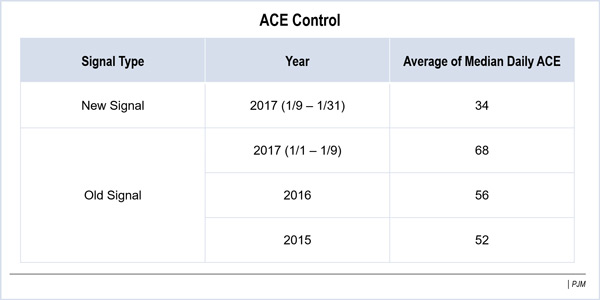By Rory D. Sweeney
FERC last week moved to investigate PJM’s regulation market, rejecting the RTO’s most recent proposal for compensating the systemwide service (ER18-87) and ordering a technical conference on larger concerns identified by stakeholders (EL17-64).
The commission denied PJM’s most recent proposal, filed in October, for the same reasons it had on previous attempts, which date back to the RTO’s efforts to comply with Order 755. The technical conference comes in response to complaints filed in that docket by the Energy Storage Association, Renewable Energy Systems Americas (RESA) and Invenergy Storage Development. They argue that operational changes PJM has made in relation to its filing have had significant negative impacts on battery storage and are “a symptom of the broader problem that the RTO misuses regulation resources to reduce generation on its system for sustained periods of time.”
FERC granted a portion of the complaints but deferred any action until after the conference and set a refund effective date of April 14, 2017.
Regulation Issues
PJM maintains two regulation signals: RegA dispatches slower, sustained-output resources such as steam and combustion resources, while RegD dispatches faster, dynamic resources, such as battery storage. The RTO uses a “benefits factor” curve to reflect the operational relationship between the signals and establish the tradeoff between their capabilities so that the market’s clearing engine can accurately compare their expected performance.
In its original filing on Order 755, PJM had proposed using the benefits factor instead of a unit’s actual “mileage” — the amount of regulation work a unit provides — in determining its payment, but FERC rejected that in November 2012 because the order required accounting for a unit’s mileage. PJM’s January 2013 compliance filing eliminated use of the benefits factor but warned it would create an “unsustainable market structure.”
PJM returned to the issue, arguing that its prediction came true and FERC’s requirements resulted in over-procurement of RegD and incorrectly signaled for additional entry into the market, which exacerbated the problem. The requirement to unconditionally respect RegD resources’ power balance also worked against overall system balance at times, the RTO said.
The RTO redesigned its regulation signals to work together to manage area control error (ACE) and revised the RegD signal to be neutral over 30 minutes rather than 15, it told the commission. It filed for approval of a four-part plan that would substitute the mileage ratio for a new “regulation rate of technical substitution curve” and adjust calculations for performance scoring, settlements and lost opportunity costs. (See PJM Regulation Compensation Changes Cleared over Opposition.)
Decision
Stakeholders were mixed in their comments to FERC, with several noting the plan was vetted through the stakeholder process and others calling it discriminatory. The commission disagreed with PJM’s contention that the proposal meets its requirements because the market clearing process accounts for the “dollar per mile” cost of RegD resources. It also rejected PJM’s argument that accounting for mileage in the settlement equation double-counts it.
In its December order to RTOs on fast-start resources, FERC noted PJM’s dispatch process doesn’t respect the “power balance constraint” and thus “unnecessarily increases the cost of serving load and puts stress on the frequency regulation resources that are necessary for maintaining system reliability.” (See FERC Drops Fast-Start NOPR; Orders PJM, SPP, NYISO Changes.)





